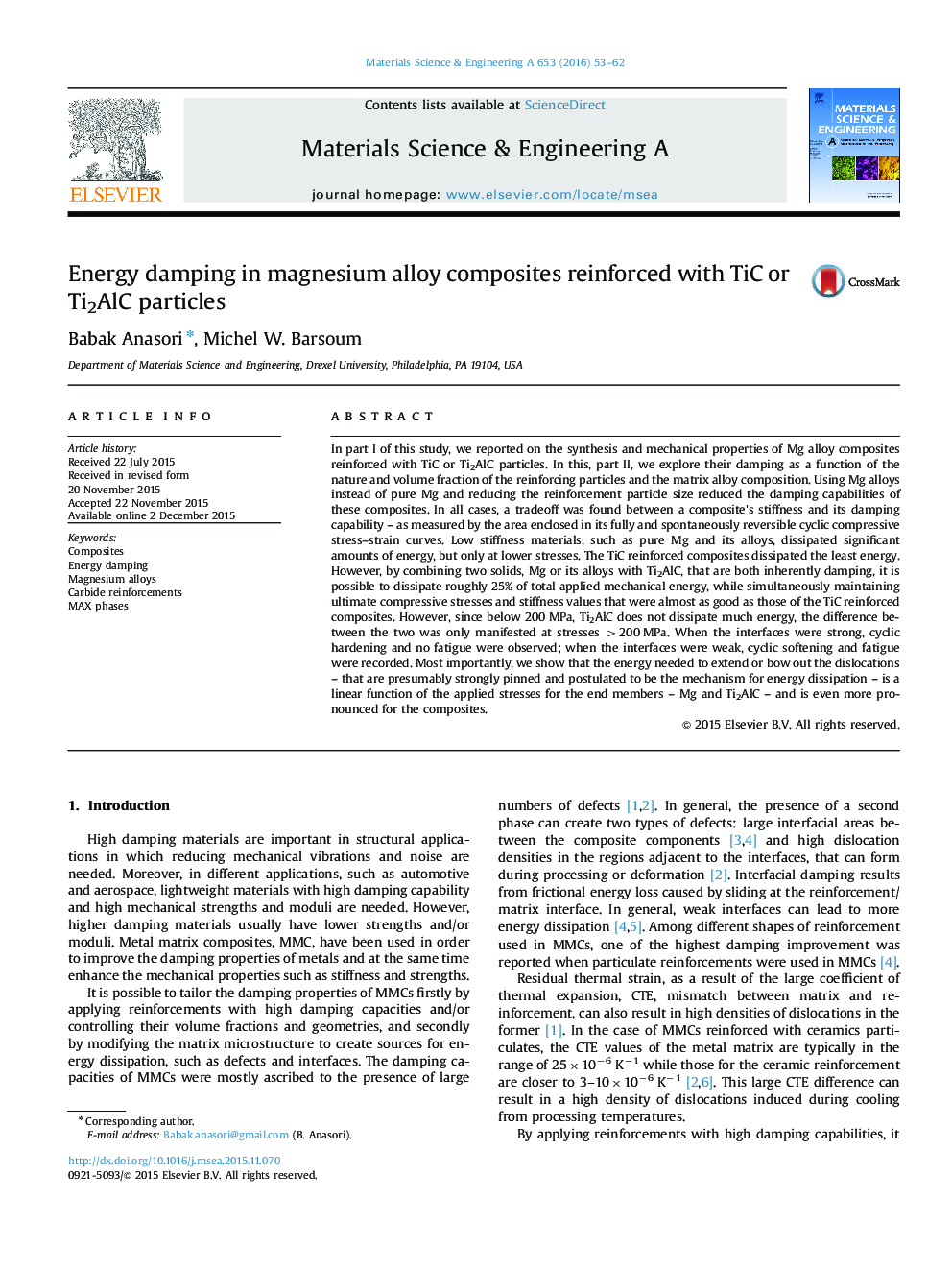| کد مقاله | کد نشریه | سال انتشار | مقاله انگلیسی | نسخه تمام متن |
|---|---|---|---|---|
| 1573782 | 1514690 | 2016 | 10 صفحه PDF | دانلود رایگان |
عنوان انگلیسی مقاله ISI
Energy damping in magnesium alloy composites reinforced with TiC or Ti2AlC particles
دانلود مقاله + سفارش ترجمه
دانلود مقاله ISI انگلیسی
رایگان برای ایرانیان
موضوعات مرتبط
مهندسی و علوم پایه
مهندسی مواد
دانش مواد (عمومی)
پیش نمایش صفحه اول مقاله

چکیده انگلیسی
In part I of this study, we reported on the synthesis and mechanical properties of Mg alloy composites reinforced with TiC or Ti2AlC particles. In this, part II, we explore their damping as a function of the nature and volume fraction of the reinforcing particles and the matrix alloy composition. Using Mg alloys instead of pure Mg and reducing the reinforcement particle size reduced the damping capabilities of these composites. In all cases, a tradeoff was found between a composite's stiffness and its damping capability - as measured by the area enclosed in its fully and spontaneously reversible cyclic compressive stress-strain curves. Low stiffness materials, such as pure Mg and its alloys, dissipated significant amounts of energy, but only at lower stresses. The TiC reinforced composites dissipated the least energy. However, by combining two solids, Mg or its alloys with Ti2AlC, that are both inherently damping, it is possible to dissipate roughly 25% of total applied mechanical energy, while simultaneously maintaining ultimate compressive stresses and stiffness values that were almost as good as those of the TiC reinforced composites. However, since below 200Â MPa, Ti2AlC does not dissipate much energy, the difference between the two was only manifested at stresses >200Â MPa. When the interfaces were strong, cyclic hardening and no fatigue were observed; when the interfaces were weak, cyclic softening and fatigue were recorded. Most importantly, we show that the energy needed to extend or bow out the dislocations - that are presumably strongly pinned and postulated to be the mechanism for energy dissipation - is a linear function of the applied stresses for the end members - Mg and Ti2AlC - and is even more pronounced for the composites.
ناشر
Database: Elsevier - ScienceDirect (ساینس دایرکت)
Journal: Materials Science and Engineering: A - Volume 653, 20 January 2016, Pages 53-62
Journal: Materials Science and Engineering: A - Volume 653, 20 January 2016, Pages 53-62
نویسندگان
Babak Anasori, Michel W. Barsoum,